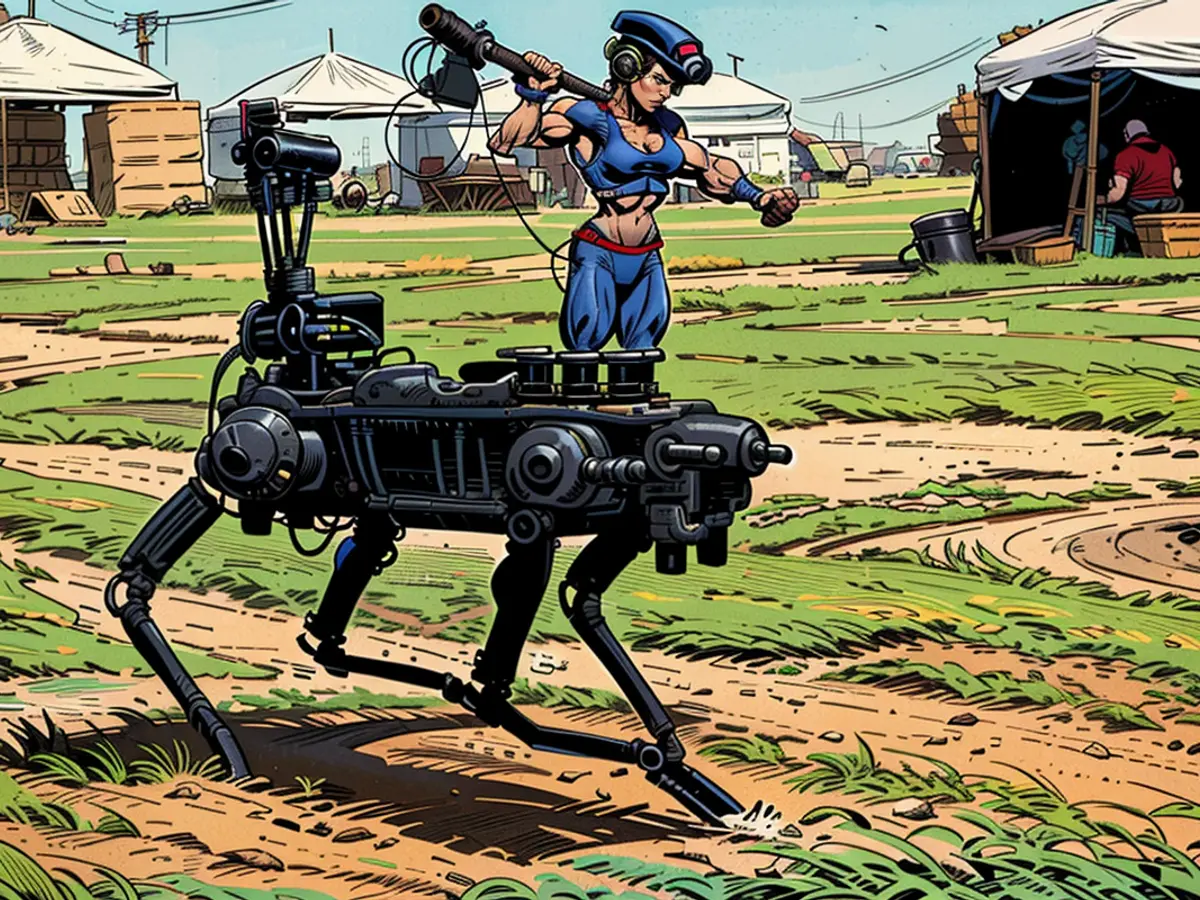- For the hunt for drones, the US Army is testing a robotic dog with an assault rifle
The "Vision 60" robot from American company Ghost Robotics has been appearing in connection with US Army research projects for years. The dog-like robot is suitable for various applications. The latest version was recently on display at the "Operation Hard Kill", a military technology show.
The system, named "Lone Wolf" according to its intended use, is said to hunt drones, according to information from "The War Zone". To shoot down the unmanned aerial vehicles, a semi-automatic AR-15 rifle or similar weapon is mounted on a freely rotating mount. With sensor technology, "Lone Wolf" is supposed to first detect drones and then shoot them down from the sky with the rifle.
Drone defense often expensive – affordable solutions needed
If it works and "Lone Wolf" hits, it would be an extremely cost-effective way to mitigate the threat of semi-automated air attacks. Often, expensive missiles are used to intercept relatively cheap drones, making continuous fire a costly affair. Especially swarm attacks, simultaneous attacks with a multitude of small drones, are hardly defendable with missiles – and if they are, the attacker has at least punched a hole in the defender's war chest.
The army's video also shows that "Lone Wolf" can be remotely controlled. However, autonomous target tracking will be inevitable for effective drone defense – the combination of human reaction speed and often not completely delay-free control technology might otherwise have little effect on the small and fast flyers.
The use of such robots on the front line would have further advantages: The small and agile devices could navigate through rough terrain while well camouflaged and could be positioned much further into enemy territory. This would give them a tactical advantage and more time to react to incoming drones without endangering soldiers' lives.
US Army tests different projects on four "legs"
"Lone Wolf" is not the only project of its kind. German defense conglomerate Rheinmetall is also researching with the "Mission Master", an unmanned vehicle that can carry different payloads and is suitable for remote or even autonomous use near the front line.
Of course, these robots are not only suitable for attack or defense on the front line. US bases also use products from US company Ghost Robotics for patrolling and other surveillance tasks.
Even the German police is testing such systems for different scenarios. In 2022, North Rhine-Westphalia's Interior Minister Herbert Reul presented the robot dog "Spot" from Boston Dynamics at the opening of a new police research center (learn more here).
The U.S. Army has been collaborating with Ghost Robotics, the company behind the "Vision 60" robot, for numerous research projects over the years. Furthermore, the U.S. Army is testing various projects on four "legs," including the drone-hunting robot "Lone Wolf."








